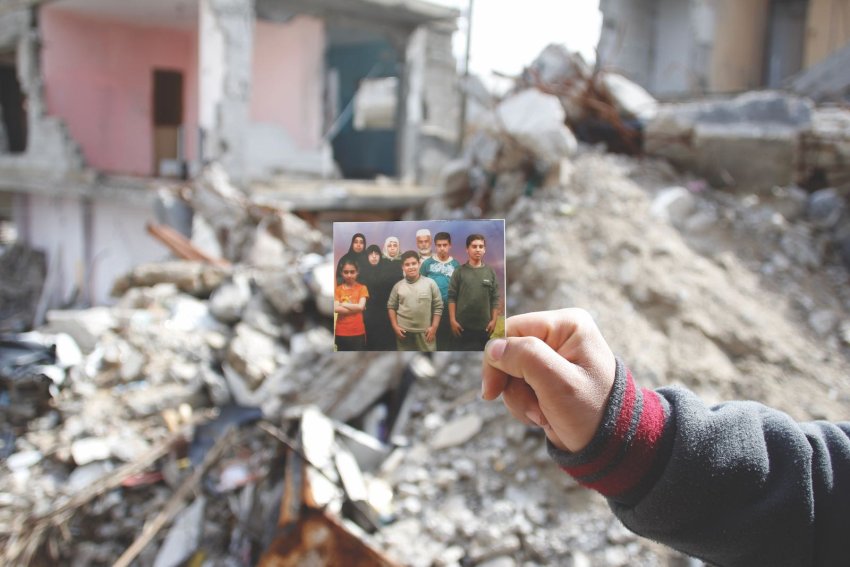
My Gaza: A City in Photographs
By Jehad al-Saftawi
McSweeney’s, 2020, 160 pp., $45.00
My Gaza portrays the oppression of the Palestinian residents of Gaza and also reflects some of the generational fractures within Gazan society. The photography is powerful but its politics is strangely blunted.
Hamas was elected as Gaza’s governing party in 2006. In response Israel has enforced a grinding blockade punctuated by ultra-violence ever since.
Jehad al-Saftawi grew up as part of the generation that in turns reacted against the decay of the Palestine Liberation Organization (PLO), the conservatism of Hamas and the horrific oppression meted out by Israel — all the while having access to a broader world via the internet.
Now resident in the United States, he was a "citizen journalist" in Gaza for many years. He photographed daily life and achieved an international audience by live streaming the 2014 Israeli offensive.
Along the way he often came into conflict with Hamas public security. Al-Saftawi is seeking US refugee status, saying that he can’t return to Gaza due to Hamas police hostility towards him.
He is a skilful photographer with a poet’s eye. An example is his photo of the hand of Yassir Mahmoud El Haj holding a picture of his family framed by the ruins of his home in which most of them were killed by an Israeli bomb.
Friends of mine from Gaza tell me that every now and again the Israelis wipe out an entire family in such a manner, just to demonstrate their power and indifference to Palestinian lives. That evil resonates through the simple photograph.
There are page after page of similarly evocative pictures, each one showing Palestinian suffering and the frustrations of everyday life lived under siege. Some are mundane, some harrowing and many record the gritty, back-breaking labour required to survive when a community is ghettoised.
But al-Saftawi wants to tell another story in the book’s foreword and its appendix.
The al-Saftawi clan is one of the biggest Fatah supporting families in Gaza. His grandfather was a founding member of Fatah and was a senior official in the PLO.
Jehad’s father, Imad al-Saftawi, suffered an 18-year stint in an Israeli jail due to his leadership of Islamic Jihad. He is now a brigadier general in Hamas’s ministry of interior.
In the book’s introduction al-Saftawi tells his family story, emphasising the brutal discipline he and his siblings were subjected to at the hands of their father and uncles.
His story is reminiscent of children of national liberation military leaders of so many struggles around the world (such as the IRA). All too often parenting skills are warped by the discipline and the brutality of the military struggle.
He describes his father as “a jihadist who killed and contributed to the killing of innocent Israelis”.
He grants that his father believed armed struggle “to be justifiable resistance to the Israeli occupation.” But, Jehad says: “I condemn these actions.”
His personal story is truthful and arresting. But it seems tailored for a US audience that would relish stories of Muslim violence and jihadist extremism, a readership that feels distaste for Israeli apartheid but doesn’t want to sully its hands by supporting the Palestinians.
It left me wondering exactly what is al-Saftawi’s attitude towards Israel. The book’s introduction simply does not mention Israeli violence against Palestinians, though the photos and their captions communicate that powerfully.
The book concludes with a glossary of terms as an appendix, designed to educate any reader ignorant of the Palestinian/Israeli conflict. This is adapted from Palestine Speaks: Narratives of Life Under Occupation.
Read alongside the introduction the glossary is almost painfully “even-handed”, refraining from validating the claims of either side of the conflict. As such it reflects a liberal sensibility and a moral restraint.
The careful use of politically neutral language reminded me of the expression “the banality of evil” that Hannah Arendt famously coined. Much evil can be masked by the self-positioning of the detached observer.
For example, the word “Zionism” appears nowhere in the book. Without naming the problem Israel’s behaviour is depoliticised.
And similarly, the dilemmas with the Palestinian leaderships and the personal failures of individual leaders, such as Imad al-Saftawi, become de-contextualised and liable to feeding anti-Arab stereotypes.
There is the raw material in al-Saftawi’s life and his coverage of Gazan common life for a penetrating analysis of the horror that is Israeli Zionism, the limitations of Hamas and the circumstances that have created those realities, including the personal politics involved.
But he lets that slip through his fingers, seemingly absorbed by his personal frustrations and the glitter of US liberalism.